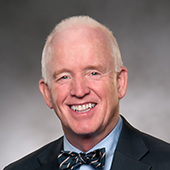THIS ARTICLE IS MORE THAN FIVE YEARS OLD
This article is more than five years old. Autism research — and science in general — is constantly evolving, so older articles may contain information or theories that have been reevaluated since their original publication date.

Listen to this story:
There’s no single way to teach children with autism. Regardless of which method a school adopts, though, it’s no mystery what helps them to thrive: calm, not chaos, in the classroom; one-on-one attention from teachers, aides and therapists; lessons tailored to the individual child’s needs, whether that means learning not to bite or how to make eye contact while shaking hands; and the opportunity to regroup through soothing activities such as swinging, rolling on mats or listening to music.
Most importantly, nearly all of these students need to work on language development, in whatever form is appropriate — writing, speech, sign language or pointing to images. For example, a child can signal that she wants to go to the bathroom by speaking, using American Sign Language (thumb between middle and index finger and twisting the wrist twice) or pointing at a picture of a toilet in the Picture Exchange Communication System.
As an administrator, professor and researcher in the field of special education for the past 40 years, I am continually struck by the rarity of programs for children with autism that include all of these elements.
U.S. federal law requires that public schools educate all children, regardless of their intellectual or physical capabilities. But the law doesn’t spell out what schools must provide, which has made it possible for less ambitious school districts to provide little more than de minimis opportunities for children with developmental delays or behavioral issues.
As a result, our nation is failing the vast majority of the half million school-age children with autism. We fail these children by not identifying them and treating them early — a key tenet of the federal special education law, the Individuals with Disabilities Education Act. The law requires that we identify preschool children with disabilities and provide the behavioral and physical therapy they need to be ready for school. But this part of the law is spottily implemented at best.
We need to give all students the best therapies available in a school setting, putting in the necessary, albeit considerable, funds to do so. The investment will pay dividends later. Research shows that if we give the best available special education to children with severe disabilities, those children are more likely to grow up to be productive, independent and able to contribute to society as tax-paying citizens.
Strategic silence:
While researching two books on special education, I learned that a number of public school districts — especially those in Massachusetts, Utah, New Jersey and California — have developed stellar programs for children with autism1,2. But these model programs make up a tiny minority of special education programs and do not seem to be sparking many imitators. Exceptional programs for students with autism and other disabilities often operate in obscurity.
Some of that silence may be strategic. Trumpeting a top-notch special education program can motivate families with hard-to-educate children to immigrate from other towns or states, further straining the school district’s budget.
But there’s a cultural disconnect as well. School leaders are all too happy to boast about test scores, athletic trophies and science-fair winners, but they don’t typically champion excellence in special education.
In May 2016, I conducted a focus group with special educators in California. One of the teachers choked up with emotion as she told me of that day’s big event: A student, for the first time in eight years, signaled that he needed to use the bathroom. For students with significant challenges, progress is often slow and incremental. This isn’t the kind of breakthrough moment that makes the school district newsletter.
On a practical level, schools often lack the specialists they need to adequately educate children with autism. These children, especially those on the severe end of the spectrum, need the most evidence-based treatment available: applied behavioral analysis (ABA).
Most families can’t afford to hire their own specialists to help their children, and look to public school special education programs for these services. But public schools employ few board-certified behavior analysts, the practitioners of ABA, and most special education teachers have little training in autism or ABA.
Unfulfilled promises:
The big sticking point, of course, is money. Educating a child with severe autism can cost up to 20 times more than teaching a neurotypical child. In Massachusetts, public education dollars can go to private schools to educate students with special needs. In the 2013-2014 school year, just over 5,300 students with autism and other disabilities were enrolled in approved private schools in the state, at an average cost of $65,000 per year for day students and $184,000 for residential students.1
Educating children with special needs is expensive because it is a labor-intensive process performed, usually in a 1-to-1 ratio, by highly educated professionals, including behavior analysts, speech-language pathologists, physical therapists and occupational therapists.
The money issue is exacerbated by the fact that the federal government has never fulfilled the promise it made in 1975, in the original special education law, to cover 40 percent of the costs. The federal government contributes about $12 billion annually instead of the $40 billion it would spend if held to its promise.
The unspent $28 billion is not a savings for society. The earlier children with developmental disabilities receive services, the better they function later in life. A synthesis of the existing literature showed that intervening when a child is 2 as opposed to 6 years old provides a cumulative lifetime savings, in 2014 dollars, of $1.2 million in social services. Another analysis, published in 2012, reveals that an intensive early intervention called the Early Start Denver Model, which uses techniques of ABA, more than pays for itself in about eight years.
And the benefits do not stop with childhood. Federal law must be updated to account for the large number of children with autism transitioning to adulthood. The last time Congress revised the Individuals with Disabilities Education Act, in 2004, autism was still relatively rare, and only one state, Indiana, mandated that health insurance cover autism. Now, as a sizeable number of children with severe forms of autism outgrow the public schools, it makes sense to extend the age of eligibility for special education services from 21 to 26, with an emphasis placed on independent living and employment.
The right thing:
Given the economic constraints school districts face in creating state-of-the-art programs for children with autism, the public schools — and parents — need to be flexible. Sometimes sending a child to a specialized private school is the best option.
Whether a child with autism attends a public or a private school, the important thing is that he or she not be isolated from the larger community. Children with autism should stay connected to their neighborhoods and hometowns, where they can interact with other students and their families, with local teachers and shopkeepers, forming relationships and bonds that ideally will support and sustain them as they grow into adults.
Ultimately it comes down to what kind of society we want to be. Does a school district spend $100,000 a year on a student with severe autism because of federal law — or because it’s the right thing to do? Our society prizes independence and self-sufficiency. Those ideals outweigh race, gender, faith, socioeconomic status — and mental functioning.
A Supreme Court decision in March 2017 was a step in the right direction. In Endrew F. v. Douglas County School District, the court unanimously concluded that a school district must provide every child, regardless of disability, an opportunity to grow.
The court decreed that a Colorado district’s special education program, which provided only minimal opportunity for Endrew, a child with autism, was insufficient. The verdict stuck down a 1982 Supreme Court ruling that only required public schools to establish a floor of opportunity in their special education programs.
The new ruling is a profound affirmation of the right of children with autism or other disabilities to be nurtured and challenged in the classroom in whatever way best meets their needs. It shifts the responsibility of the school district from meeting a minimum standard to offering reasonable hope of progress. I hope it leads to more public schools of excellence for children with autism and other disabilities.
John McLaughlin is director of research and analytics at ChanceLight Behavioral Health, Therapy and Education, which serves children and young adults with special needs in 27 states.

By joining the discussion, you agree to our privacy policy.